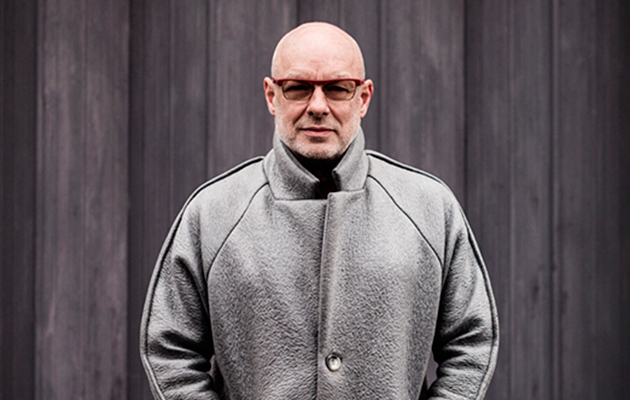
The 3rd Velvet Underground album is one of your favourites, isn’t it?
It’s one of my big albums, I guess. It made a huge impact on me and it has done ever since. They broke so many rules. Look what it did with drumming! Instead of having a hairy guy hitting a big drum kit, there’s a girl with one drum and she plays the simplest things. You have Lou, who was an enthusiastic but not great guitar player. I thought, ‘Wow, I can probably play like that.’ Sterling was fantastic; a very lyrical player. Early on, you had John playing viola. John had worked with La Monte Young, so had Lou. That band represented a convergence of a lot of thoughts. At that time, I was playing with the Scratch Orchestra and the whole subtext of that is that art students were the best musicians because they didn’t know how to play things, they were more likely to make original choices. Nearly all of the Scratch Orchestra was art students and nearly all of the Portsmouth Sinfonia was art students as well. So these foundational institutions from that time were people who’d come through an education that said, in a way, craft is not the issue. Ideas are the issue. Approaches, processes.
Talking of art students, here’s your Winchester School of Art report from 1967. “A promising student. Difficult to pin down to work. Hampered by intellectual considerations, but certainly worth the effort made for him.” Does that still apply, do you think?
That still applies! There was also something else going on which is not talked about any more. Social mobility. Post-war, for the first time ever in English history, suddenly it was possible for working class kids to appear within these scenes. They brought in different experiences and different sensibilities. Pop music was one of them. That didn’t come from Eton and it didn’t come from Oxford and Cambridge. That came from kids on housing estates. It was their music and they took it into the art colleges, and it came back out of the art colleges with a new vigour and a lot of new ideas added in to it. The Who is a very good example. That was in this period that is now referred to by economists as the ‘golden age of capitalism’. At the end of the Second World War, people were not interested in empire militarism –they were rejecting it. But other was governments were looking at Russia and saying, ‘Jesus, look what these Communists are giving people. Free education, free health care.’ They were worried about revolution, I think, in England or in the western countries. There was a very clear effort by governments in Western Europe to say, ‘We’ve got to be presenting the people with something that is a decent option. We have to make things look a little better.’ It stayed that way until Thatcher and Reagan, when the elites clawed back their droit du seigneur and took everything back and continued to do so and still do continue to do so.
I saw you on-stage with Laurie Anderson during last year’s London Film Festival. You admitted to experiencing a “nostalgic glow” around some of the music you made during the 1970s…
That doesn’t happen very often!
Exactly! I wondered what prompted it.
Can you remember what I was referring to in particular?

Yes, you’d recently found the tracking sheets for Taking Tiger Mountain.
Oh, yes. That was nostalgia more for a way of working and the total naivety I had at the time. When I look at those sheets, they’re hilarious. We were working on 16 track machines at that point. ‘16 tracks!’, I thought. ‘Bloody hell, that’s pretty generous!’ Quite often, you’ll see the track sheet and there’s only seven tracks used. Now it is almost totally conceivable these days that anybody would ever stop at seven tracks. It just doesn’t happen. Even if it’s a guy playing solo guitar, he’ll want a close mic and a far away mic and a pick up. All this bollocks.
There’s a story about recording “Needle In The Camel’s Eye”. You had Phil Manzanera playing the same rhythm line four times and you were hitting his guitar…
I was banging his whammy-bar, beating it in rhythm. We did three or four tracks of him and I doing exactly the same thing, so you’re getting four rippling guitars pulsing against one another.
It’s terrifically Heath-Robinson! What those tracking sheets and that Manzanera story demonstrate is how one can apply oneself physically; it’s a more tactile experience.
Yes, and that’s important. It’s one of the things people very easily lose when the get into the computer. It encourages you to stay in that world. Once you’re in there, it’s all very comfortable. You can connect it together virtually. To actually plug in an instrument, is clumsy by comparison. An instrument seems very primitive. So I keep having to push myself out of that box. There’s a lot in there I like and know how to use and can do interesting things with. But I keep having to remind myself, when I like making music it’s when it comes from my whole body, not just my finger. That’s why I stand up when I work. You do everything differently standing up than sitting down.



